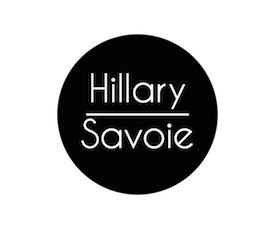We are sitting in a room with two doctors and a genetic counselor discussing Esmé’s epilepsy. One of these doctors was introduced to us as a “rock star.” She is that kind of doctor who is part doctor part scientist, the kind of doctor who has a ten-month waiting list, the kind of doctor who you sit down with and think “ok, this is the person who is finally going to help us.”
But this visit, despite the “big guns,” goes like so many of our other visits with doctors: There are no answers, and only a hope for help.
Now I don’t mean to say that these doctors are inadequate in any way. In fact, they are about as fantastic and knowledgable as you get. There may be ten other doctors in the world as qualified to manage Ezzy’s seizures. They are on the cutting edge of detection of genetic causes for epilepsy and treatment of seizure. There isn’t anywhere to go from here…which is strange because we have spent so long (it seems) trying to climb to the best. And considering where we started–with a neurologist who refused to accept that Esmé was even having seizures and who acted like my hubby and I were neurotic messes–it has been quite a journey.
We spent almost three hours with this threesome in clinic going over family history (a.k.a. grasping at straws), briefly touched upon her “dysmorphic” features (a.k.a. pissing off the mother), discussing recent changes (a.k.a. shocking the doctor), and developing a treatment and testing plan (a.k.a. “scientific” prayer). These doctors are about as invested and interested as you could hope them to be. They listen. They collaborate with each other and with us. They make sense. They never seem rushed.
But Esmé is a challenge. That’s how they put it: “Treating her seizures is proving to be a challenge for us.” Which is hysterical, because everything with Ezzy is like that…but especially her seizures. You see, this is the scientific prayer I referred to…It is a belief that science and the tools of science will provide an answer. For most people this prayer works: it detects their aneurysms, their gallstones, their you-name-it. Or proves the absence of those things. So it looks like “science” not like prayer. But when you bump up against the edge of what they “know,” then you see the vast scaffolding of assumptions, facts, averages, and “likelies.” You see it is all just belief and hope and prayer.
Even proving beyond a doubt that Ez has seizures took almost a year. We saw her first seizure in September 2011. We knew what it was. But proving it took five hospital admissions. Over the next 11 months she had more than a total of two weeks worth of EEG monitoring to try to “see” seizure activity in the brain. Lots of people who have serious seizure disorders have abnormal EEGs no matter when you look at their brain. Most people will have abnormal EEGs for awhile following a seizure. And almost everyone who has a seizure while hooked up to EEG has a clear pattern showing the seizure.
Ezzy had none of these things until late August 2012 when she had yet another seizure on EEG in the hospital…and finally something showed up. It was muted and subtle because the seizure was coming from so deep in her brain. This is how they avoided detection for so long. Thank goodness we never let anyone talk us out of that search and we (finally) had doctors who had seen the seizures–in person and on video–who were smart enough to know that just because MOST people do something, it doesn’t mean that they ALL do. And Ezzy is certainly not “most people.”
Diagnosing her underlying (seizure) disorder, while less pressing, is equally challenging. They say she doesn’t seem to fit in any of the categories of seizure disorder. She has a massive panel of gene testing out right now. It will test several dozen genes associated with infantile epilepsy (seizures that onset before the first year). The blood was drawn a month ago. The results are due in late November, early December. Bt the doctors said that we should not be surprised if this test finds nothing. It is likely that everything will look ok or that the test will come back with a mutation of “unknown significance.” This essentially means “We found this funny thing in her DNA. We know enough to know it is unusual. But as to whether it is responsible for her seizures or her stunning eyelashes, we dunno.”
The next step after that is to enroll her in the doctor’s research group and sequence her DNA from beginning to end…this would likely result in them finding something of “unknown diagnostic significance” after six months or a year. From there, and even now, they say our best hope is that our doctor speaks to another doctor at some conference somewhere…and they happen to have a patient who has similar clinical or genetic presentation.
Realizing all of this while sitting in our long-awaited doctor’s visit, I felt like the floor dropped out from under me. This isn’t new news. I have know all of this for a long time. But hearing it from them, from our super star doctor it really hit home how unusual our daughter is, how vulnerable, how little anyone can help or predict what’s coming.
I felt like I did, as a child, when I realized my parents are powerless to help with the really hard stuff.
You know, that moment when you feel as though you are suspended on a wire 100 stories high with the wind carrying off your breath.
But you have no choice but to keep moving.


Continue to hold on to that thread of hope that there is an answer. There is something, somewhere, that someone knows….